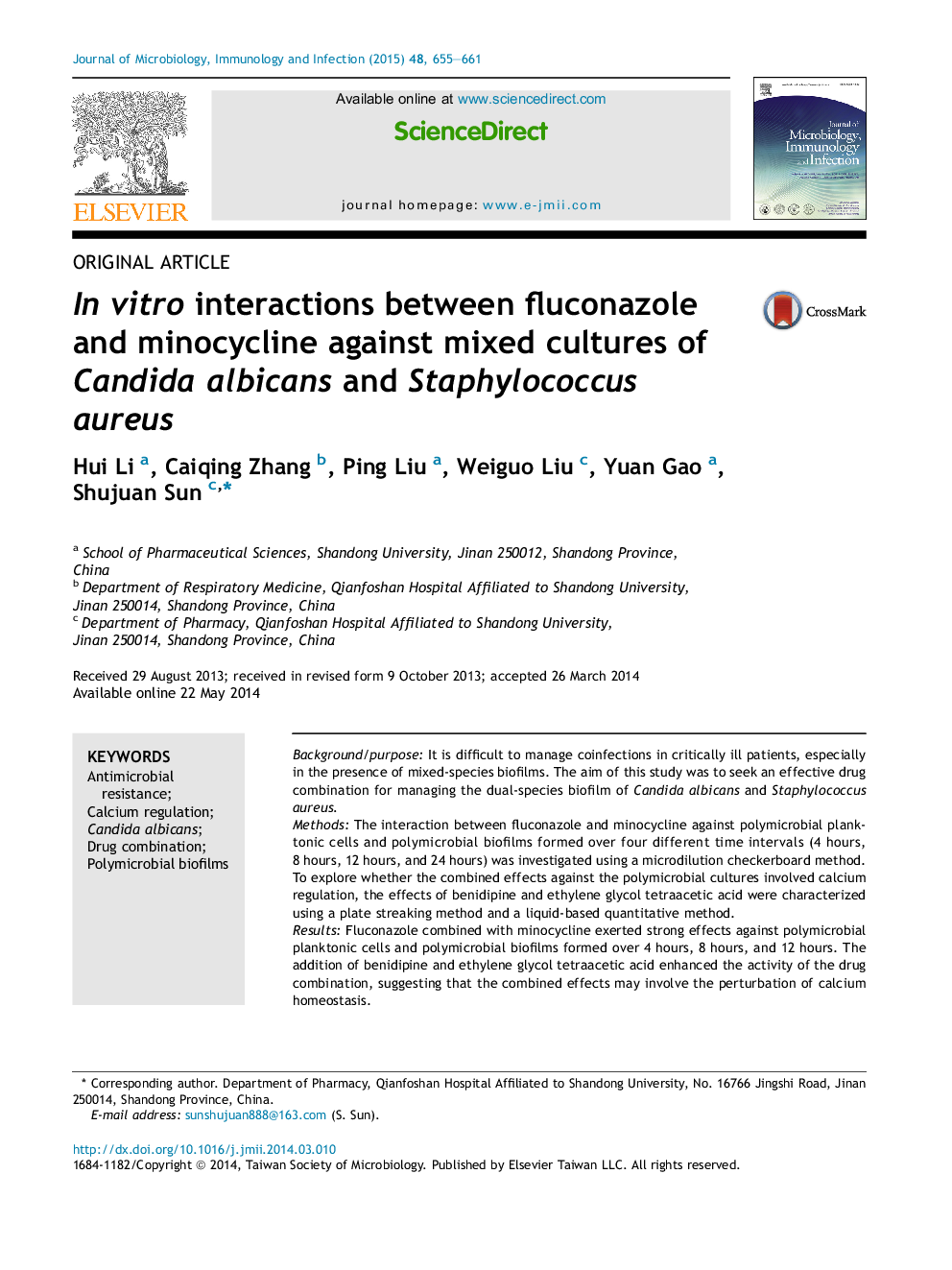| Article ID | Journal | Published Year | Pages | File Type |
|---|---|---|---|---|
| 3377805 | Journal of Microbiology, Immunology and Infection | 2015 | 7 Pages |
Background/purposeIt is difficult to manage coinfections in critically ill patients, especially in the presence of mixed-species biofilms. The aim of this study was to seek an effective drug combination for managing the dual-species biofilm of Candida albicans and Staphylococcus aureus.MethodsThe interaction between fluconazole and minocycline against polymicrobial planktonic cells and polymicrobial biofilms formed over four different time intervals (4 hours, 8 hours, 12 hours, and 24 hours) was investigated using a microdilution checkerboard method. To explore whether the combined effects against the polymicrobial cultures involved calcium regulation, the effects of benidipine and ethylene glycol tetraacetic acid were characterized using a plate streaking method and a liquid-based quantitative method.ResultsFluconazole combined with minocycline exerted strong effects against polymicrobial planktonic cells and polymicrobial biofilms formed over 4 hours, 8 hours, and 12 hours. The addition of benidipine and ethylene glycol tetraacetic acid enhanced the activity of the drug combination, suggesting that the combined effects may involve the perturbation of calcium homeostasis.ConclusionFluconazole in combination with minocycline is a potential approach for counteracting C. albicans–S. aureus dual-species biofilms.
